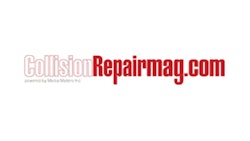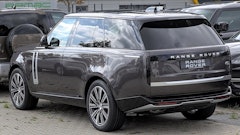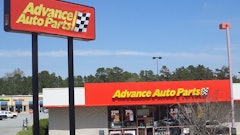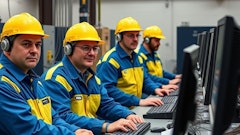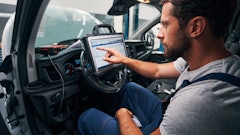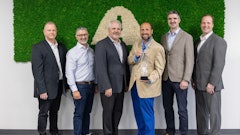
by Andrew Marsh
A long time ago collision repair was all about panel and paint. Anything – from body fittings to suspension to electronics – was seen as the exclusive preserve of either a service shop or another department inside larger collision repair businesses.
Not anymore.
The process began as a pure by-product of collision repair because regular service shops – especially those working on new or nearly new vehicles – rarely do deep invasive mechanical work. By contrast, a collision repairer rarely has anything but deep invasive mechanical work as a means to access the body repair. Even minor repairs, such as a scrape to a door, involves work which usually only occurs in a collision repair shop.
The second factor was in part due to regulation of collision repair workshop prices by third parties such as motor insurance companies. This has led in the UK directly to clear blue sky between franchise dealership hourly costs (from $190 to $420 Canadian or more per hour) and those of collision repairers (from $50 to around $114 Canadian per hour).
So we have a desire not to farm work out to service specialists in order to maximise the collision repair profit line along with a profoundly competitive operational cost base. Add to that inherently higher skills base than in a typical service operation – well, there is an opportunity for a major push into the direct retail market. Of course those all-important panels will still form the backbone of the business because everyone understands that panel damage is not normally a good look, and so needs to be restored.
Yes, there are some truly amazing service specialists who do not charge a fortune – but they are a very rare breed and as a result are rarely short of work.
The single biggest change in the past few years was to deal with all aspects of the underbody mechanicals apart from the engine or transmission, with most collision repairers installing four wheel alignment equipment. Given they are well versed in removal and refitting entire suspension, brake and steering systems and the unique condition of our roads there is a real opportunity to build on a growing public awareness of suspension / steering system health. Regular franchise service outlets struggle to perform the work properly (how embarrassing!) and even if they do, most are blown out of the water on labour rates.
Where next? Electrical/electronic faults. Some repairers have invested in areas of the shop devoted to fault tracing, and given that the electrical/electronic architecture of automobiles is not only vehicle specific but is also on average upgraded or changed every five years or sooner, this is and will continue to be a growing area of the aftermarket. Once again, a collision repairer will not be phased by having to go deep inside the car to find the fault, whereas a franchise service shop brought up on warranty style work might think twice.
So let’s stand tall, keep on doing what we’re good at and look forward to a bright future for the one-stop-shop super collision repairer.
About Auto Industry Consulting
Auto Industry Consulting is an independent provider of technical information and consultancy to the global collision repair industry which was formed by Ben Cardy and Andrew Marsh in 2011. Of the many services we offer two of our key products are:
Auto Industry Insider uses in-depth research to identify the relevant key industry challenges and their effect on the vehicle repair sector – see www.autoindustryinsider.com.
Ezi-Methods provides OEM based repair methods and information via our web service, now sold in the UK, USA, Australia, South Africa and New Zealand. For further information, please visit www.ezimethods.com






